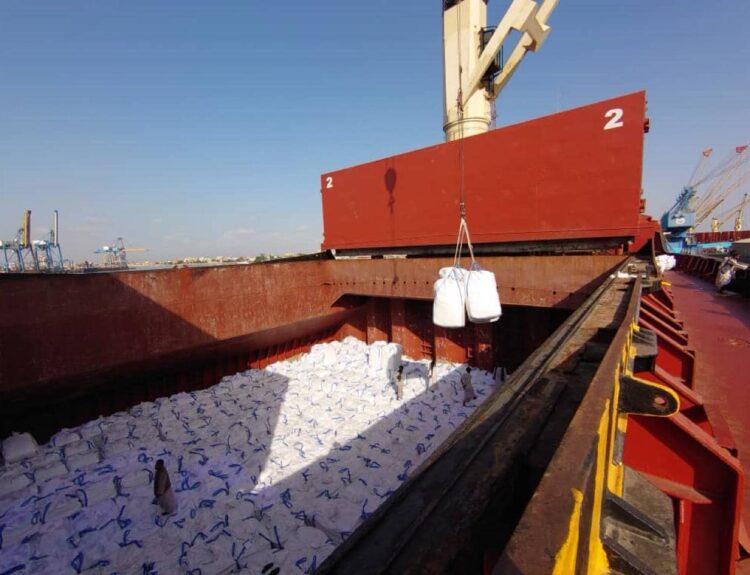Oil prices are falling on the global market due to declining demand from China and concerns about a potential decrease in consumption in the US. Even the escalating tension in the Middle East has not supported prices, which have dropped over the past 30 days from approximately $86.5 to $75.4 per barrel of Brent crude oil. An interesting coincidence was the collapse of oil prices on 1 August and the conclusions of the OPEC Joint Ministerial Monitoring Committee (JMMC) meeting, which reviewed crude oil production data for May and June. Notably, the previous meeting on 2 June also preceded a price drop – from $84.2 on 25 May to $77.5 on 4 June per barrel of Brent crude oil. What do these fluctuations mean for us? So far, they are not significantly affecting petrol station prices. Significant changes at the pumps will only occur when oil drops below $70 per barrel. This is quite possible, although achieving it won’t be easy.
Global news agencies report concerns about a recession in the largest oil consumer, the United States. They also mention reduced oil consumption in China, as the country’s economy teeters on the brink of crisis. With these two factors, it’s clear: the less consumption, the more likely prices will fall.
The third factor significantly influencing oil prices is the rising tension in the Middle East, where the Persian Gulf countries produce the most oil. Notably, last weekend saw quite loud events close to the Gulf. Harsh statements from Washington and Tehran followed one another, and Israel also showed determination to defend itself from a potential Iranian attack. The region began to reek of a major war, increasing threats to oil production and even more so to oil transportation from the Gulf.
The fourth factor currently playing a role in the global oil market is the decisions of OPEC+, the Organisation of the Petroleum Exporting Countries plus the Russian Federation and a few other exporting countries. They usually try to agree on coordinated production and export cuts during periods of falling oil prices, which typically leads to price rebounds.
These four factors together shape expectations for oil prices and, indirectly, petrol station prices.
Oil Speculation by Fearful Traders
Last week, there were many reports about recession fears in the US. These fears were based on the publication of the July payroll report on 2 August, which contained rather weak data. This report complemented information about declining diesel fuel consumption in China, a major oil consumer, significantly impacting oil demand and prices.
Of course, such news doesn’t trigger an immediate reaction; it merely raises concerns about potential developments. At such times, market speculators start to play their role. They invest in buying and selling oil futures as soon as they hear relevant news. Do news agencies report potential demand reductions? OK, the traders say to themselves, we need to sell. And at that moment, oil prices quickly dropped. This happened last weekend.
Traders should also consider the risks posed by increased tension in the Middle East, but they seem to have already factored in everything possible. The actions of the Houthis in the straits and the Red Sea have been influential for a long time. Their impact on international oil trade prices has already been accounted for. After a powerful airstrike by the Israeli Air Force on Houthi bases in July, the threat from these attackers is no longer considered catastrophic.

Photo: Unless oil drops below $70 per barrel, petrol prices won’t budge. Source: The Gaze
Shake and Shake Again
The prices of oil are experiencing pressure due to a decision made by the OPEC+ group of producers on 1 August. This decision suggests that from October this year, they will stop the voluntary production cuts currently in place, which were initially aimed at supporting prices. These “voluntary” cuts, mainly implemented by the biggest producers in OPEC+—Saudi Arabia and Russia—were supposed to last until 2025 as initially planned.
However, as early as June, OPEC+ announced that these voluntary cuts would begin to be phased out from October. On 1 August, OPEC+ reaffirmed their plan to start lifting the voluntary restrictions from October, despite acknowledging that production had exceeded limits in the first half of the year in countries like Iraq, Kazakhstan, and Russia. These countries have assured other OPEC+ members that they will compensate for the overproduction in the second half of the year, but these are merely promises. Additionally, according to Reuters, oil production in OPEC countries increased slightly in July.
But, monitoring production in OPEC+ countries is not straightforward. Since Russia is under sanctions from G7 countries, it is striving to maintain its oil export revenues at any cost, including through illegal sales channels. The extent of these discrepancies can be seen in the data published on 5 August by Andriy Klymenko, head of the Monitoring Group on Sanctions and Freedom of Navigation.
According to him, there is a significant difference between the data published by exchange broker monitoring services and the Monitoring Group on Sanctions and Freedom of Navigation (MGSFN). In just the last three weeks of July, 13 tankers with crude oil left Novorossiysk (Black Sea), according to MGSFN, while the exchange broker data reported nine tankers. The difference in volumes is estimated to be at least 3.6 to 4.4 million barrels. According to exchange brokers, 33 crude oil tankers left two Russian ports in the Baltic Sea during the same period, whereas MGSFN reported 52 tankers, corresponding to a difference of approximately 20.4 million barrels of Urals crude oil.
The circumvention of sanctions on Russian oil exports allows Russia to receive more than $60 per barrel, which is the sanction price cap imposed by G7 countries to stop Russia’s war in Ukraine. Therefore, these “shadow” export schemes for Russian oil have a supporting effect on global prices. As long as Russia can circumvent oil sanctions, petrol prices will remain uncomfortable.
Source: The Gaze







